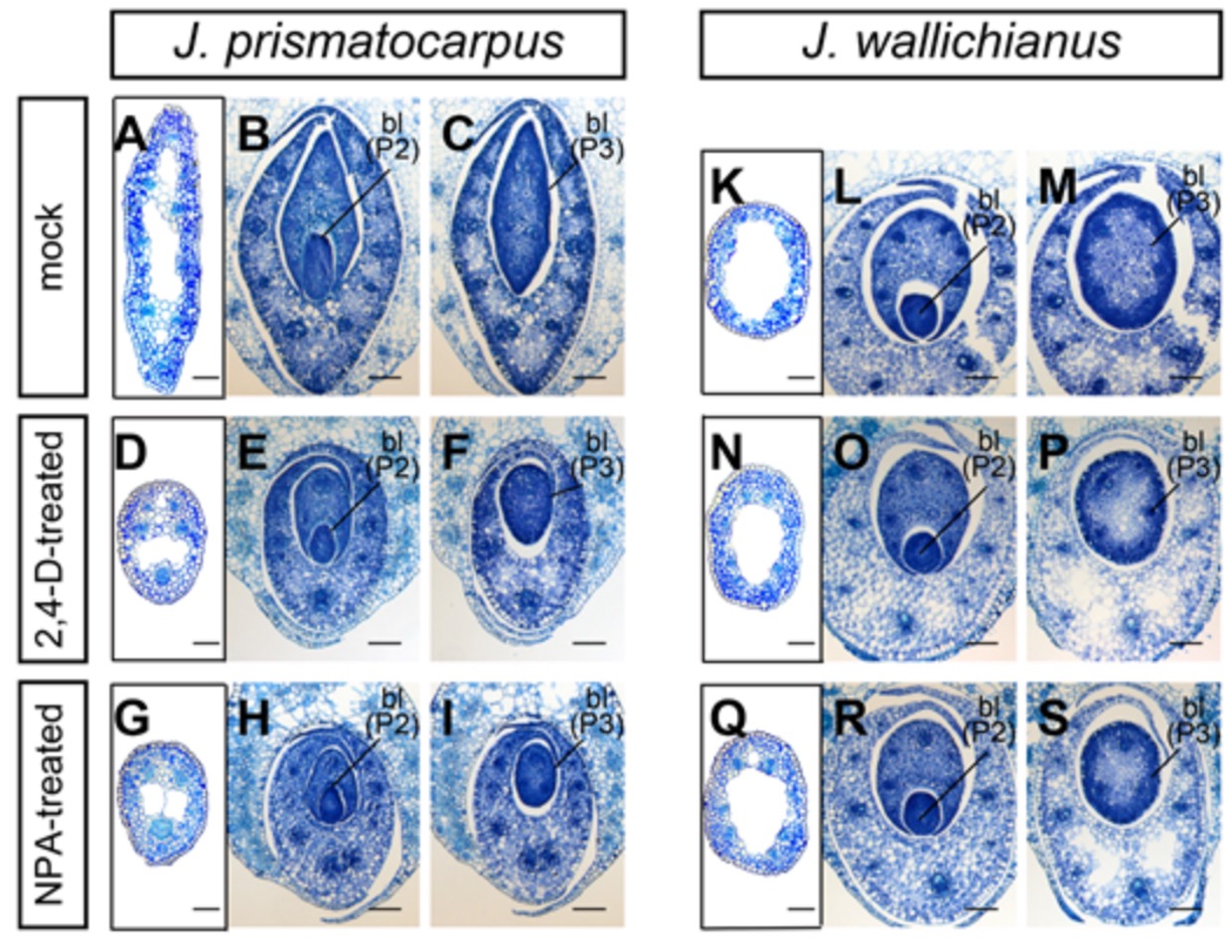Common plant hormone also produces unusual leaf structure Botanists study how flat, one-sided leaves grow

Iris are known for their flowers and chives might be common kitchen staples, but experts are interested in these plants for the unusual structure of their leaves. Researchers have uncovered some of the genetic controls that create flat leaves without distinct top and bottom faces.
The common leaf structure is flat and bifacial, meaning that as each new leaf grows, cells differentiate into various specialized cell types with distinct purposes on the top and bottom sides. Normally, the process of becoming flat occurs along the boundary between the top and bottom sides of the leaf. Unifacial leaves perform all the same functions as bifacial leaves, but are anatomically a single side. Unifacial leaves are more common in plants that grow tubular leaves, like chives and onions. Researchers at the University of Tokyo want to understand how a leaf can be flat without anatomically distinct top and bottom sides.
“We previously revealed that the DROOPING LEAF gene governs the thickening growth of unifacial leaves to make them flat. But how unifacial leaves find an axis for the thickening growth that leads to leaf flattening was unclear,” explained Professor Hirokazu Tsukaya from the Graduate School of Science, an expert in leaf development and evolution.
Tsukaya’s research team members have become specialists at growing and analyzing unusual plant species in their laboratory.
For their recent experiments, the researchers used a species not commonly found in research labs called Juncus prismatocarpus, sometimes known as branching rush. The plant is usually 30 centimeters to 60 cm tall, grows in damp ground and is native to Japan, China, most of Southeast Asia, as well as Australia and New Zealand.
Researchers compared the flat unifacial leaves of J. prismatocarpus to the cylindrical unifacial leaves of its evolutionary cousin J. wallichianus, which is found throughout temperate, tropical and subtropical Asia.
“This species is usually not familiar to many plant scientists, but it has some advantages, such as small stature and fast growth. Although we had to establish many experimental systems for this new material, we could reveal several new findings,” said Tsukaya.
To uncover the axis around which flat, unifacial leaves grow, researchers traced the location of a nearly universal plant growth hormone called auxin. In many well-studied plant species, gradients of high to low concentrations of auxin define the axis around which cells and tissues organize themselves into specialized structures early in development.
Instead of trying to visualize auxin hormone gradients directly, researchers used auxin-sensitive genes as indicators to track the detailed location of normal auxin activity in both plant species. Researchers then used drugs to disrupt normal auxin activity and observed how the leaves responded. They also looked for changes in the DROOPING LEAF gene they had identified in previous research.
The unifacial leaves of J. prismatocarpus normally start round (in a cross section view) and develop into flat blades, but without normal auxin distribution, the leaves remained round. The cylindrical unifacial leaves of J. wallichianus showed no changes in response to auxin. Researchers have concluded that high levels of auxin in particular locations in developing unifacial leaves act as the axis for unifacial leaf development. While that axis is intact, DROOPING LEAF in J. prismatocarpus somehow causes new cells in the central domain of the leaf to extend into a flat shape, rather than just continuing as a cylinder.
“Our discoveries on a novel system for the flattening growth of unifacial leaves might be applied for artificial design of flower forms,” said Tsukaya.
Anatomically, flowers are just specialized leaves, so deciphering the genetic regulation of leaf anatomy could theoretically reveal clues to the genetic pathways controlling flower, seed or fruit shape.

Normal leaf shape in the top row (mock treatment) of the flat unifacial leaves of J. prismatocarpus (left) and the cylindrical unifacial leaves of its evolutionary cousin, J. wallichianus (right). Leaves are seen at both immature (P2, B and L center columns) and mature (P3, C and M right columns) stages of development. Drugs that inhibit the plant hormone auxin (2,4-D middle rows and NPA bottom rows) cause J. prismatocarpus leaves to have a round shape (D through I), but do not affect J. wallichianus (N through S). © Photo by Akira Nukazuka, first published in Plant Physiology, DOI: 10.1093/plphys/kiab087
Papers
Akira Nukazuka, Takahiro Yamaguchi, and Hirokazu Tsukaya, "A Role for Auxin in Triggering Lamina Outgrowth of Unifacial Leaves," Plant Physiology: February 23, 2021, doi:10.1093/plphys/kiab087.
Link (Publication )
)





